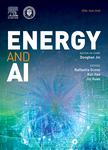Two-stage capacity optimization approach of multi-energy system considering its optimal operation
作者机构:Big Data Enterprise and Artificial Intelligence Laboratory(Big-DEAL)University of the West of England(UWE)Frenchay CampusBristolUnited Kingdom
出 版 物:《Energy and AI》 (能源与人工智能(英文))
年 卷 期:2020年第1卷第1期
页 面:35-63页
核心收录:
学科分类:08[工学] 082701[工学-核能科学与工程] 0827[工学-核科学与技术]
基 金:Department for Business Energy and Industrial Strategy UK Government BEIS (TEIF-101-7025)
主 题:Multi-energy system Renewable energy Biomass Genetic algorithm Capacity design Optimization
摘 要:With the depletion of fossil fuel and climate change,multi-energy systems have attracted widespread attention in ***-energy systems,fuelled by renewable energy,including solar and biomass energy,are gain-ing increasing adoption in commercial *** of previous capacity design approaches are formulated based upon conventional operating schedules,which result in inappropriate design capacities and ineffective operating schedules of the multi-energy ***,a two-stage capacity optimization approach is pro-posed for the multi-energy system with its optimal operating schedule taken into *** demonstrate the effectiveness of the proposed capacity optimization approach,it is tested on a renewable energy fuelled multi-energy system in a commercial *** primary energy devices of the multi-energy system consist of biomass gasification-based power generation unit,heat recovery unit,heat exchanger,absorption chiller,elec-tric chiller,biomass boiler,building integrated photovoltaic and photovoltaic thermal hybrid solar *** variable efficiency owing to weather condition and part-load operation is also *** algorithm is adopted to determine the optimal design capacity and operating capacity of energy devices for the first-stage and second-stage optimization,*** two optimization stages are interrelated;thus,the optimal design and operation of the multi-energy system can be obtained simultaneously and *** the adoption of the proposed novel capacity optimization approach,there is a 14%reduction of year-round biomass consumption compared to one with the conventional capacity design approach.




